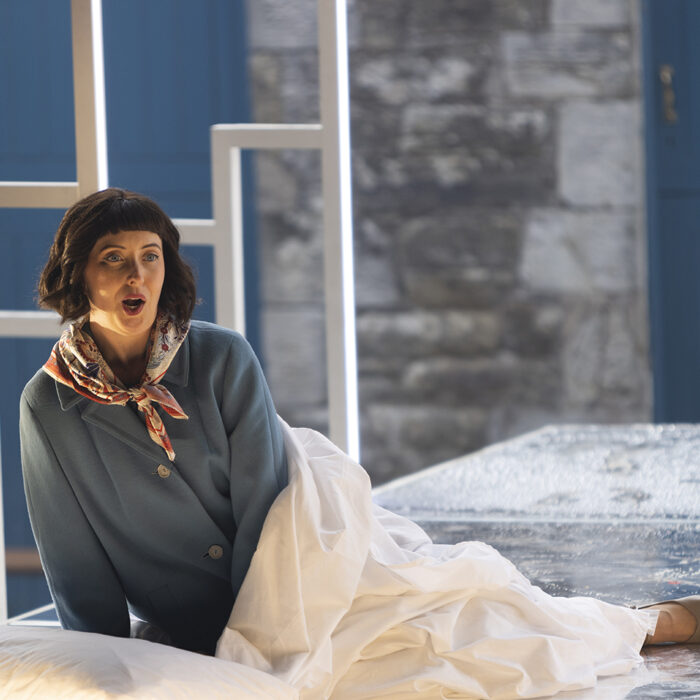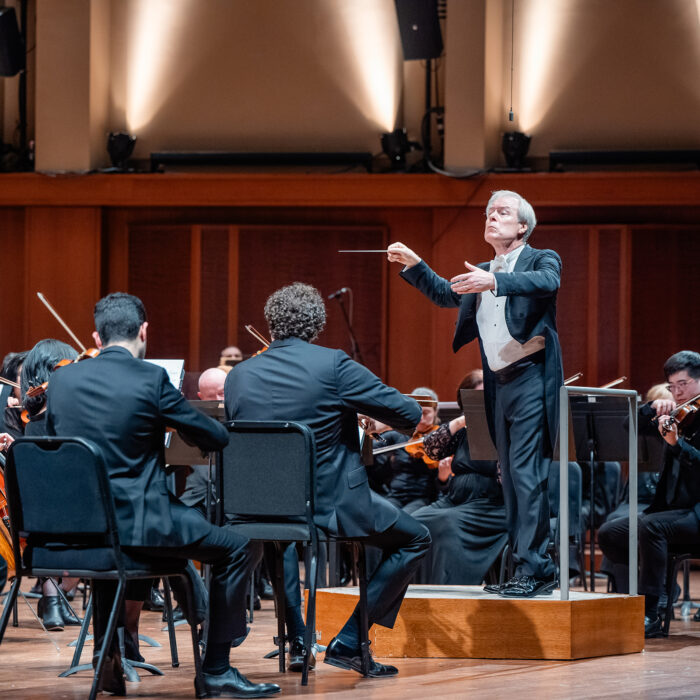
Opéra de Nice Côte d’Azur 2024 Review: L’Olympiade des Olympiades
By Robert Adelson & Jacqueline Letzter(Photo: © Dominique Jaussein)
France is currently in the grip of Olympic fever. Although Paris is the official site of the games, every corner of the country is feeling the effects of the event, even in the cultural domain. The Opéra de Nice has thus declared their 2023-24 season to be, at least in part, devoted to the theme of sports. In the recent production of Dvořák’s “Rusalka”, for example, the nymphs of Bohemian woodlands were transformed into a team of synchronized swimmers. But this staging was nothing compared to the latest spectacle, “L’Olympiade des Olympiades,” conceived expressly for the occasion.
“L’Olympiade des Olympiades” is a pasticcio opera created by conductor Jean-Christophe Spinosi and his sister Nathalie Spinosi, drawing on a libretto whose action is set in the Olympic games of ancient Greece: “L’Olimpiade” by Pietro Metastasio (1698-1782). Metastasio’s libretto was one of the most popular in the history of opera, set to music by over 70 composers including Vivaldi, Caldara, Sarti, Pergolesi, Hasse, Traetta, Paisiello and Cimarosa. Even Mozart composed two different settings (K. 294 and K 512) of one of the arias from “L’Olimpiade.”
An Opera House Transformed
For the occasion, scenographer Fabien Teigné and stage director and choreographer Eric Oberdorff transformed the interior of the Nice opera house into an athletic field. To do so, they took the radical decision of covering the parterre with a wooden platform to which they added several sections of plastic chairs as one would find in the risers at sporting events. Above all of this throned a giant screen onto which were projected the French and English surtitles, a running stopwatch and assorted video clips; most notably a livestream of runners carrying an “Olympic flame” along the nearby Promenade des Anglais. At the end of the opera, these runners entered the opera house from the street and appeared on stage.
This enlarged stage was occupied by a cast of young singers and not one but two orchestras: the Orchestre Philharmonique de Nice playing on modern instruments and Spinosi’s own period-instrument Ensemble Matheus. All of the singers and orchestra members were dressed in sportswear: tennis shoes, t-shirts, baseball caps, and the occasional swim cap and goggles. Both ensembles were conducted by Spinosi, who jogged energetically from one to the other in his sweatpants and white sneakers.
It is unclear whether in the end this transformation of the performance space was worth it. It significantly reduced the number of available seats, as much of the main floor seating was eliminated to make room for the stage extension. Moreover, nearly a third of the boxes were unusable because they were either occupied by the Chorus of the Opéra de Nice or blocked by the video screens. More problematic was the fact that the repositioning of the singers and musicians in the center of the hall meant that the natural stage acoustics were lost, so that the entire performance needed to be amplified. This amplification was not subtle, and there were balance problems particularly in the duet numbers. But in the end, these decisions were in keeping with the desire of the Opéra de Nice’s Director Bertrand Rossi to bring new and younger audiences to the opera house, as the audience was closer to the artists throughout the performance.
Eighteenth-Century Rarities
The audience was treated to arias by some of the most influential composers of the eighteenth-century, whose full operas are almost never performed. In this respect, it was a refreshing contrast to the recent pasticcio given at the Opéra de Monte-Carlo, assembled from mostly well-known arias by Handel and his contemporaries. Unfortunately, the printed program of “L’Olympiade des Olympiades” did not give a clear list of the arias. Moreover, the Opéra de Nice somewhat misleadingly billed the spectacle as being based on the music of Antonio Vivaldi, who admittedly enjoys greater name recognition than Baldassare Galuppi (1706-1785) or Johann Adolf Hasse (1699-1783). Vivaldi was indeed well-represented with several numbers. Soprano Marlène Assayag (Aminta) beautifully interpreted the aria “Il fidarsi della speme” and the flamboyant countertenor Fernando Escalona (Licida) stole the show with the peaceful “Mentre dormi”. But the two Galuppi arias were no less impressive: the flashy “Superbo di me stesso”, confidently sung by countertenor Rémy Brès-Feuillet (Megacle) and “Tu me da me dividi”, passionately rendered by contralto Margherita Maria Sala (Aristea).
Soprano Ana-Maria Labin (Argene) gave the audience the rare pleasure of hearing two arias from the Neapolitan school: “Che non mi disse in dì” by Tommaso Traetta (1727-1779) and “Fiamma ignota” by Davide Perez (1711-1778). Pergolesi’s music was also featured in this production: bass Luigi De Donato (Clistene) excelled in “Del destin non vi lagnate” as did baritone Gilen Goicoechea (Alcandro) in “L’infelice in questo stato”.
The “competition” between the two orchestras was also part of the spectacle. Since baroque and modern ensembles perform at different pitch levels, the string players of the Ensemble Matheus tuned their gut strung instruments to modern pitch. As baroque woodwinds cannot adjust in the same manner, all the wind parts were played exclusively by the members of the Orchestre Philharmonique de Nice. Spinosi prepared a creative arrangement of the score to exploit the strengths of the two ensembles, as well as their spatial positioning in the hall. Sometimes the modern ensemble reinforced the tutti sections played by the baroque group, at other moments the two orchestras exchanged passages in antiphonal fashion.
The entire spectacle lasted under two hours, performed without intermission. The Spinosis chose to replace all recitativo secco by the narration of an MC (played by Anaïs Gurnay), in the style of a sports commentator, sometimes speaking over the orchestral introductions to arias. Choreography was always present, either in the form of dancers from the Ballet Nice-Méditerranée or a group of breakdancers assembled especially for the occasion (and in honor of the addition this year of breakdancing as a new official Olympic sport).
Aficionados of baroque opera might be more interested in the production of Vivaldi’s “L’Olimpiade” that Spinosi will conduct next month at the Théâtre des Champs-Elysées. But the Opéra de Nice should be applauded for their “L’Olympiade des Olympiades,” an admirable effort to present opera in an innovative fashion and attract new and younger audiences.



